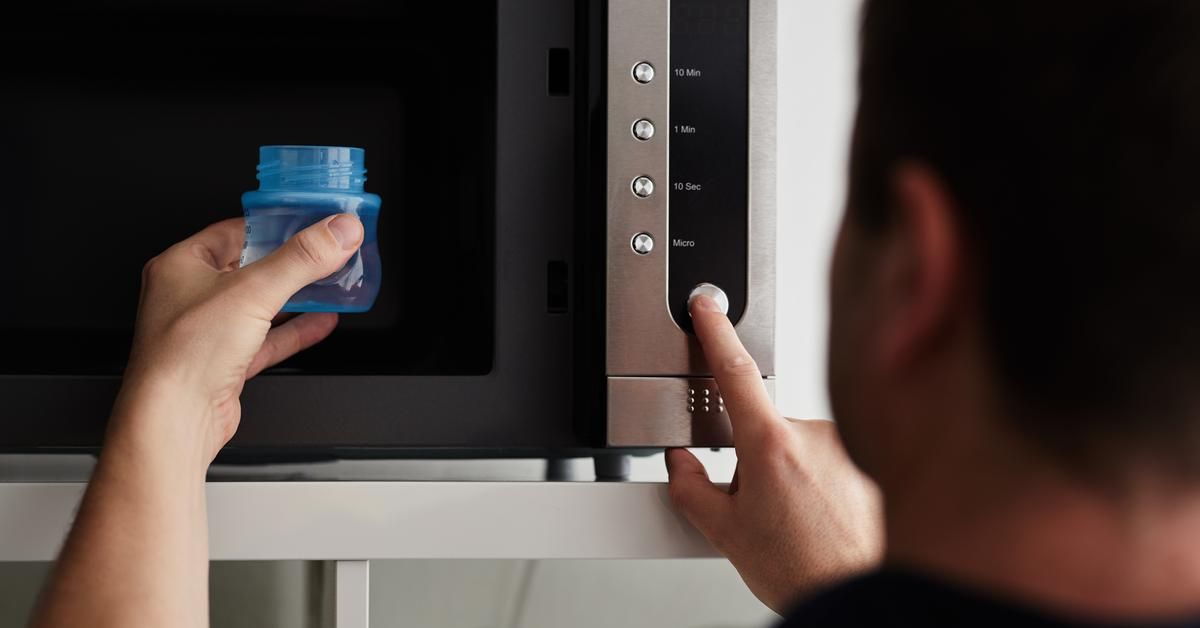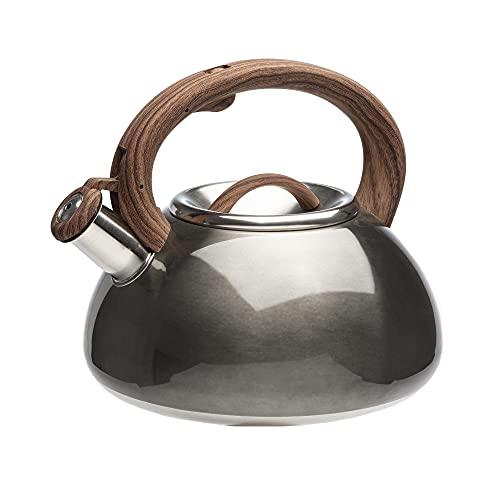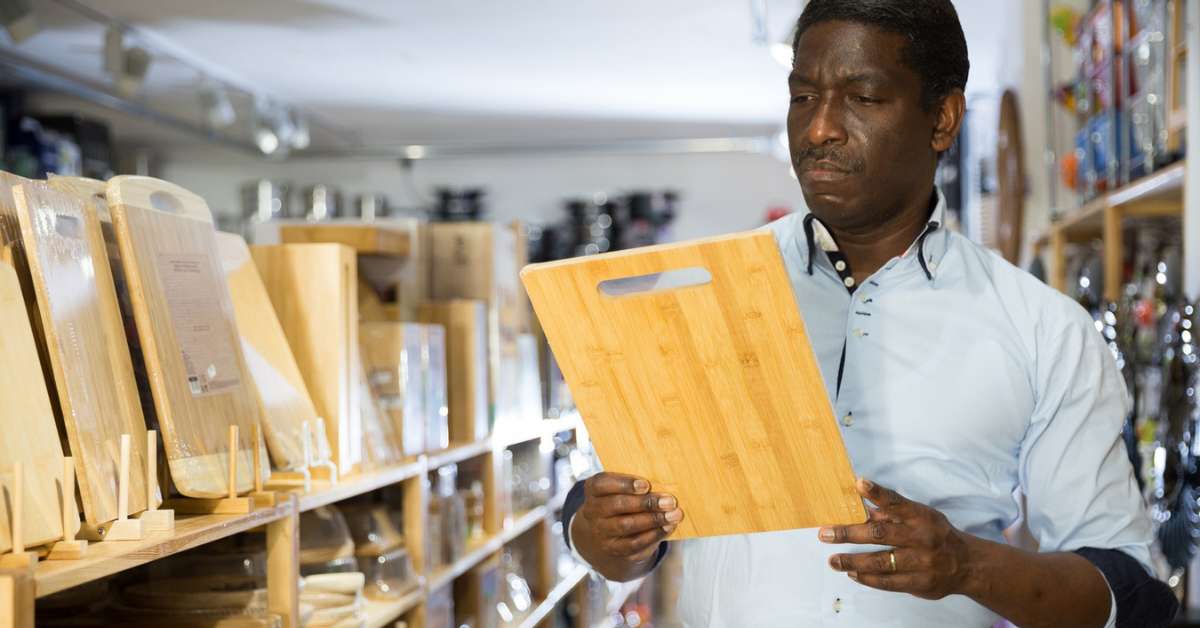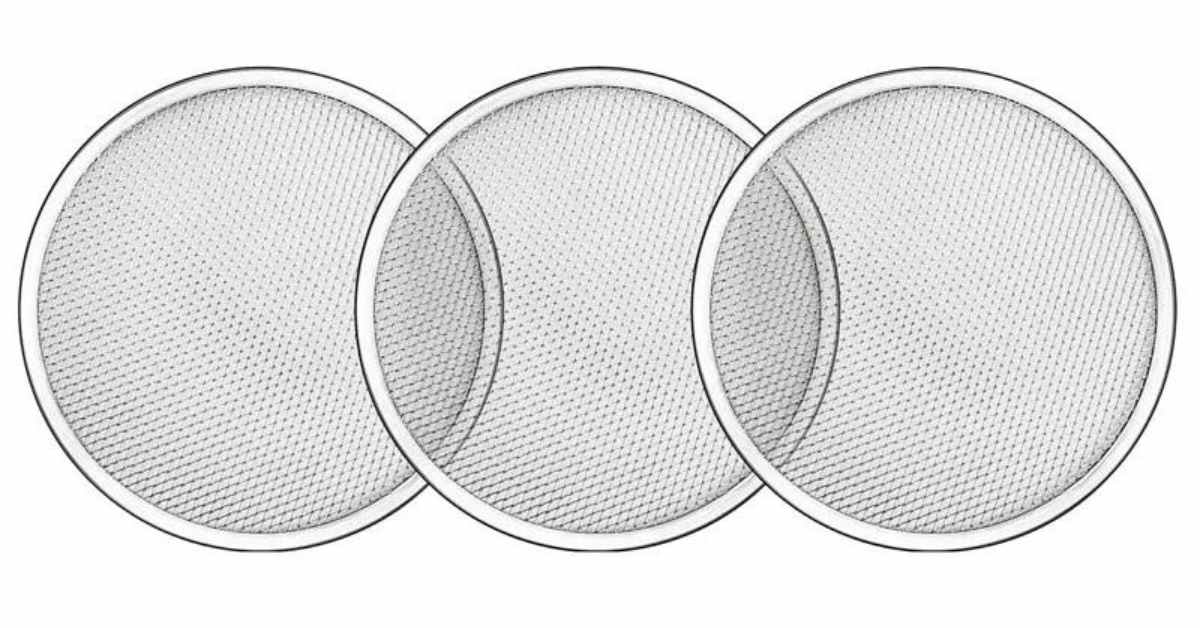Microwaves have become essential kitchen appliances for their convenience and speed. They commonly reheat leftovers, defrost frozen foods, and quickly prepare meals. However, when placing certain items in the microwave, such as water bottles, there seems to be some confusion and concern regarding their safety.
This article will explore the question: Can you put a water bottle in the microwave? We will explore the potential risks and safety guidelines and provide you with a clear understanding of whether it is safe or not to microwave a water bottle. So, let’s dive in and debunk the myths surrounding this common kitchen dilemma.
Table of Contents
ToggleWhat Happens When You Microwave a Water Bottle
When microwaving a water bottle, it’s essential to understand what happens when you subject it to the microwave’s energy. To grasp this concept fully, let’s first briefly examine how microwaves work.
Microwaves generate electromagnetic waves that penetrate food and beverages, causing water molecules to vibrate rapidly. This vibration produces heat, which cooks or warms the food or liquid. The microwaves are specifically designed to target water molecules due to their polar nature, making them highly effective in heating and cooking.
While microwaves are designed to heat and cook food and beverages, not all materials are suitable for microwave use. Most water bottles are made from plastic, and certain plastics may not be microwave-safe. When a plastic water bottle is exposed to high temperatures in the microwave, several factors come into play that can make it unsafe.
Firstly, the plastic used in some water bottles may not withstand microwave-generated heat. As the water inside the bottle heats up, it can cause the plastic to melt or deform, releasing harmful chemicals into the water or even causing the bottle to burst.
Secondly, microwaving a sealed water bottle can create pressure build-up inside the container. The steam generated from the heated water may not have an easy escape route, potentially causing the bottle to explode under pressure.
Potential hazards of microwaving water bottles
Microwaving a water bottle not explicitly labeled as microwave-safe can lead to various hazards.
These hazards include:
Release of harmful chemicals: When the plastic in a water bottle is subjected to high temperatures, it can release potentially harmful chemicals, such as BPA (bisphenol A), phthalates, or other toxins, into the water. These chemicals may have adverse health effects when consumed.
Risk of burns or scalds: If a microwave-heated water bottle bursts or leaks hot water, it can result in burns or scalds. The hot water may spill onto the user or cause the bottle to rupture, leading to contact with hot surfaces or steam.
Damage to the microwave: In some cases, microwaving a water bottle can cause damage to the microwave itself. The heat generated by the bottle or its potential explosion can harm the interior of the microwave, including the turntable, walls, or other components.
What Are Water Bottles Made Of
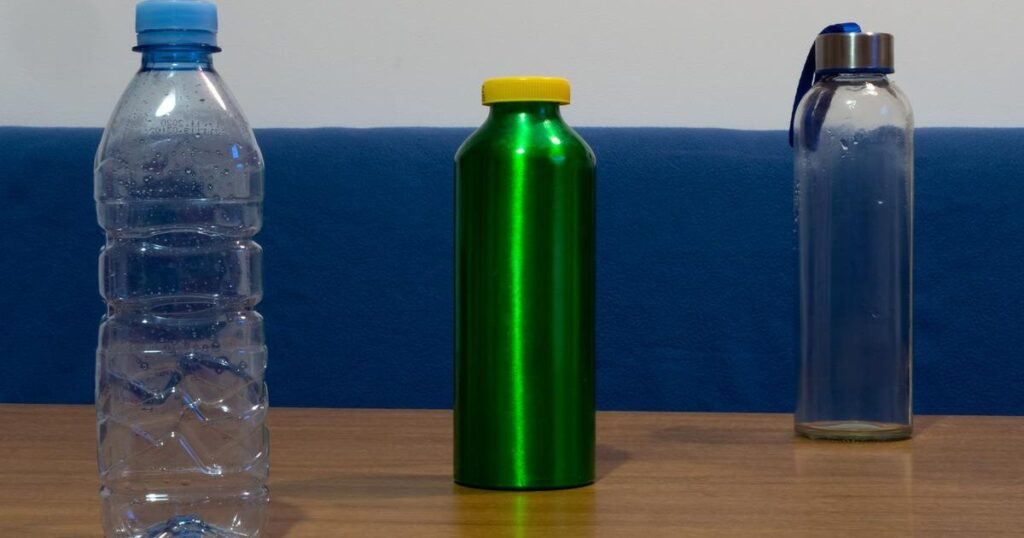
When it comes to water bottles, they can be made from various materials, each with its properties and considerations. Let’s explore the common materials used in making water bottles, understand their properties, and how they react to heat, including microwaving.
Plastic
Plastic is one of the most commonly used materials for water bottles due to its affordability and versatility. However, not all plastics are created equal in terms of microwave safety. Some plastics may contain harmful chemicals that can leach into the water when exposed to heat, posing health risks. It is essential to check the labeling and ensure that the plastic used in the water bottle is microwave-safe if you plan to heat it in the microwave.
Stainless Steel
Stainless steel water bottles have gained popularity due to their durability and ability to keep beverages hot or cold for extended periods. Unlike plastic, stainless steel is generally considered safe for use in the microwave. However, it’s important to note that stainless steel is a conductor of heat, which means the bottle itself can become hot when microwaved. Use caution when handling a heated stainless steel water bottle to avoid burns.
Glass
Glass water bottles offer an alternative to plastic, providing a non-toxic and reusable option. Glass is generally considered microwave-safe. Still, ensuring that the bottle is specifically labeled as such is crucial. Also, microwaved glass water bottles can become hot, so handle them carefully to prevent burns.
Aluminum
Aluminum water bottles are lightweight and often have insulated features to maintain the beverage’s temperature. However, aluminum is not suitable for direct microwaving. Metal in the microwave can cause sparks and damage to the appliance. Transferring the contents to a microwave-safe container is crucial to heat the liquid.
Can You Put a Water Bottle in the Microwave and Is it Safe
When microwaving a water bottle, it’s essential to consider the type of water bottle you have and its microwave safety. Let’s explore the different kinds of water bottles and their microwave safety, understand the microwave-safe symbols, factors determining a water bottle’s microwave safety, and the risks associated with microwaving non-microwave-safe water bottles.
Different types of water bottles and their microwave safety
Microwave-Safe Water Bottles:
The manufacturer explicitly labels Some water bottles as microwave-safe. These bottles are designed and tested to withstand the heat generated in the microwave without deforming, releasing harmful chemicals, or posing any risks. If your water bottle has a microwave-safe label, it is generally considered safe to heat in the microwave per the manufacturer’s instructions.
Non-Microwave-Safe Water Bottles:
Other water bottles may not have a specific microwave-safe label or may be labeled unsuitable for microwave use. These bottles are not designed to withstand the heat generated in the microwave and can pose risks when exposed to high temperatures. Respecting these labels and avoiding microwaving non-microwave-safe water bottles is essential to prevent potential hazards.
Explanation of microwave-safe symbols:
Manufacturers often use specific symbols or icons to indicate whether a water bottle is microwave-safe. The most common character is a microwave with wavy lines, meaning that the bottle is safe to use in the microwave. Conversely, a crossed-out microwave symbol or a warning sign signifies that the bottle should not be microwaved.
Factors that determine a water bottle’s microwave safety
Several factors influence a water bottle’s microwave safety:
- Material: The type of material the water bottle is made of plays a significant role in its microwave safety. Materials such as certain plastics, Glass, and microwave-safe ceramics are more likely to be suitable for microwave use, while metals and non-microwave-safe plastics should be avoided.
- Construction: The design and construction of the water bottle can affect its ability to withstand microwave heat. Bottles with thick walls, proper sealing, and heat-resistant components are more likely to be microwave-safe.
- Manufacturer’s Guidelines: Always refer to the manufacturer’s instructions and guidelines regarding microwave use. They provide specific information about the bottle’s microwave safety and any precautions.
Risks of microwaving non-microwave-safe water bottles
Microwaving a water bottle that is not labeled as microwave-safe or is explicitly labeled as not suitable for microwave use can pose various risks:
- Deformation or Melting: Non-microwave-safe water bottles can deform, warp, or melt when exposed to high temperatures. This can lead to chemical leaching or even cause the bottle to burst, potentially releasing hot liquids or harmful substances.
- Release of Harmful Chemicals: Materials used in non-microwave-safe water bottles may release harmful chemicals when heated. These chemicals can contaminate the water and pose health risks when consumed.
- Explosion or Bursting: Microwaving a sealed, non-microwave-safe water bottle can create pressure build-up inside the container, potentially causing it to explode or burst. This can result in hot liquid splattering, leading to burns or other injuries.
To ensure the safety and longevity of your microwave, it is crucial to follow the guidelines and avoid microwaving water bottles that are not explicitly labeled as microwave-safe. When in doubt, transfer the contents to a microwave-safe container before heating. Your well-being should always be the top priority when using kitchen appliances.
Can Microwaving Water Bottles Affect Their Properties
Microwaving water bottles can impact their properties. Let’s explore how microwaving can affect the properties of water bottles, the effects of heat on different materials used in water bottles, and how microwaving can influence the quality and taste of water.
Effects of Heat on Different Materials Used in Water Bottles
Plastic Water Bottles:
When plastic water bottles are microwaved, the heat can cause the plastic to soften, deform, or even melt. This can result in changes to the shape and structure of the bottle, compromising its integrity. Additionally, microwaving certain types of plastic can release harmful chemicals into the water, posing health risks.
Glass Water Bottles:
Glass is generally considered safe for use in the microwave. However, prolonged exposure to high temperatures can cause the Glass to become hot, making it challenging to handle. Extreme temperature changes can also lead to thermal shock, potentially causing the Glass to crack or shatter.
Stainless Steel Water Bottles:
Microwaving stainless steel water bottles can cause the bottle to become hot due to the metal’s conductivity. This can make it easier to handle with proper insulation or protection. It’s essential to exercise caution when microwaving stainless steel water bottles to avoid burns.
How microwaving can affect the quality of water and its taste
Uneven Heating:
Microwaving water bottles may result in uneven heating, leading to hot spots within the liquid. This uneven distribution of heat can affect the overall quality of the water and may make it less enjoyable to consume.
Changes in Taste:
The heat generated by the microwave can alter the taste of water. Some individuals may notice a distinct or unpleasant taste in microwaved water, which can be attributed to chemical changes caused by the heating process.
Loss of Nutrients:
In some cases, microwaving water bottles can lead to a loss of certain nutrients in the water. Heat-sensitive vitamins or minerals may be susceptible to degradation when exposed to high temperatures.
Alternatives to Microwaving Water Bottles
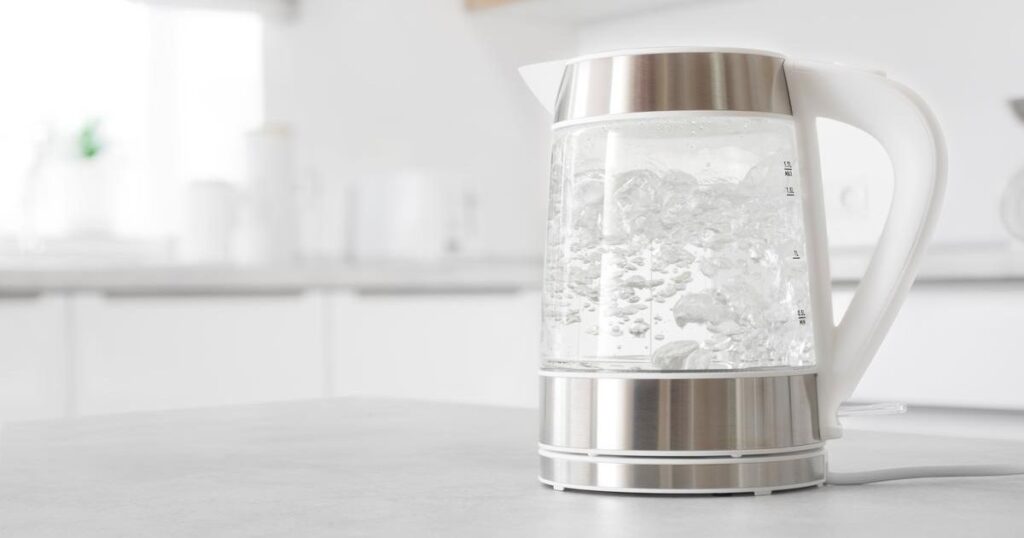
When heating water without a microwave, several alternative methods are available. Let’s explore these alternatives, discuss the benefits and drawbacks of each way, and consider environmentally friendly options.
Electric Kettle
An electric kettle is a convenient and efficient way to heat water. It quickly boils water using an electric heating element, providing hot water for various purposes. Electric kettles are generally safe and easy to use, allowing precise temperature control. However, they require an electrical outlet and may consume more energy than other methods.
Stovetop Kettle or Pot
Heating water on a stovetop using a kettle or pot is a traditional and widely used method. It offers versatility, as you can choose different heating sources, such as gas or electric stoves. This method allows for greater control over the heating process, but it may take slightly longer to bring the water to a boil than using an electric kettle.
Immersion Heater
An immersion heater, a travel heater, or an electric coil is a portable device that can heat a water container. It is advantageous when traveling or when access to a stove or kettle is limited. However, caution must be exercised when using immersion heaters to ensure proper insulation and to avoid contact with water while the device is plugged in.
Solar Water Heater
A solar water heater utilizes the sun’s energy to heat water, making it an environmentally friendly option. Solar water heaters are typically installed on rooftops or in open areas to maximize exposure to sunlight. While this method requires initial investment and relies on sunny weather conditions, it can provide an energy-efficient and sustainable way to heat water.
Benefits and Drawbacks of Each Alternative Method
Electric Kettle:
- Benefits: Fast heating, convenient, precise temperature control.
- Drawbacks: Requires an electrical outlet, which may consume more energy.
Stovetop Kettle or Pot:
- Benefits: Versatile, allows for greater control, widely available.
- Drawbacks: Slightly longer heating time, requires a stove.
Immersion Heater:
- Benefits: Portable, valid for travel, easy to use.
- Drawbacks: Requires caution, limited capacity, unsuitable for large volumes of water.
Solar Water Heater:
- Benefits: Environmentally friendly, energy-efficient, sustainable.
- Drawbacks: Requires sunny weather, initial investment, and installation considerations.
Environmentally Friendly Options
To prioritize sustainability, consider using alternative methods that minimize energy consumption and reduce environmental impact. Options such as solar water heaters, stovetop kettles, and energy-efficient electric kettles can reduce energy consumption while providing the convenience of heating water.
By choosing environmentally friendly options and being mindful of energy usage, you can contribute to a more sustainable lifestyle and help reduce your carbon footprint.
Remember, the choice of heating method will depend on your specific needs, available resources, and personal preferences. Select the best way for your requirements, considering convenience, efficiency, and sustainability factors.
Tips for Safely Microwaving Water Bottles
Microwaving water bottles can be done safely if proper precautions are taken. Here are some dos and don’ts to remember when microwaving water bottles, along with guidelines on properly using microwave-safe water bottles and safety precautions to prevent accidents.
Dos:
Follow Manufacturer’s Instructions: Always read and adhere to the manufacturer’s instructions for microwaving your specific water bottle. These instructions provide valuable information on the bottle’s microwave safety and any particular precautions.
Use Microwave-Safe Water Bottles: Ensure the water bottle you intend to microwave is labeled microwave-safe. Microwave-safe bottles are designed and tested to withstand the heat generated in the microwave without posing risks or releasing harmful substances.
Remove Caps and Lids: Before microwaving a water bottle, remove any caps, lids, or seals. These can create pressure build-up inside the bottle and potentially lead to explosions or bursts. If the bottle has a separate cover or cap, place it loosely on top instead of sealing it tightly to allow steam to escape.
Monitor Heating Time: When microwaving water bottles, pay attention to the recommended heating time specified by the manufacturer. Overheating can cause the bottle to become excessively hot and potentially deform or release harmful chemicals. Follow the recommended heating duration to ensure the bottle remains safe.
Don’t:
Don’t Microwave Non-Microwave-Safe Bottles: Avoid microwaving water bottles that are not explicitly labeled as microwave-safe or are labeled as not suitable for microwave use. These bottles are not designed to withstand the heat generated in the microwave and can pose risks such as deformation, chemical leaching, or explosions.
Don’t Overheat: Avoid overheating the water bottle in the microwave. Excessive heat can lead to the bottle becoming too hot to handle or cause structural damage. Follow the recommended heating time and avoid prolonged exposure to high temperatures.
Don’t Microwave Metal Water Bottles: Metal water bottles should never be microwaved as they can cause sparks, arcing, and damage to the microwave. If you have a metal water bottle, transfer the contents to a microwave-safe container before heating.
Safety Precautions
Use Oven Mitts or Towels: When removing a heated water bottle from the microwave, use oven mitts or wrap the bottle with a towel to protect your hands from the heat. Remember that the bottle and its contents can be scorching.
Handle with Care: Be cautious when handling a microwaved water bottle, as the contents and bottle can be hot. Avoid touching the heated bottle directly, and be mindful of potential spills or splatters when opening the bottle.
Allow for Cooling Time: After microwaving, allow the water bottle to cool down before handling or drinking from it. This will reduce the risk of burns and ensure a safer experience.
By following these tips, you can safely microwave water bottles and minimize the potential hazards of heating plastic, Glass, or other materials in the microwave. Prioritize your safety and always exercise caution when using kitchen appliances.
Conclusion
Microwaving water bottles requires careful consideration to ensure safety and preserve the integrity of the bottle and its contents. It is crucial to use microwave-safe water bottles and follow the manufacturer’s guidelines to prevent risks associated with overheating, deformation, or the release of harmful substances.
It is essential to understand the materials used in water bottles, their reactions to heat, and their potential effects on water quality and taste. Additionally, exploring alternative methods to heat water without a microwave, such as electric kettles or stovetop pots, can provide viable and environmentally friendly options.
By following proper dos and don’ts, handling microwaved water bottles carefully, and prioritizing safety precautions, you can enjoy the convenience of heating water while ensuring your well-being. Remember safety should always be the top priority when using kitchen appliances.
FAQs
Is it OK to heat a water bottle in the microwave?
It depends on the specific water bottle. Microwave-safe water bottles designed to withstand the heat generated in the microwave can be safely heated. However, following the manufacturer’s instructions and guidelines for proper usage is essential.
How long should I microwave a water bottle?
The recommended heating time can vary depending on the manufacturer and the specific water bottle. It is best to refer to the instructions provided with the water bottle to determine the appropriate heating time for safe usage.
Can you put plastic bottles in the microwave?
Not all plastic bottles are safe for microwaving. Some plastics may release harmful chemicals or deform when exposed to high temperatures. Look for water bottles labeled microwave-safe before heating them in the microwave.
What happens when you microwave a water bottle with hot water in it?
Microwaving a water bottle with hot water can cause the water to heat up further, potentially creating a pressure build-up inside the bottle. This can lead to the bottle bursting or exploding, resulting in a hazardous situation. It is best to avoid microwaving a water bottle with hot water already inside.
Is it safe to drink water from a microwaved water bottle?
If you have heated a microwave-safe water bottle according to the manufacturer’s instructions, it is generally safe to drink the water from it. However, always exercise caution and check for unusual changes in the bottle or the water before consuming.
What water bottles are microwavable?
Water bottles labeled microwave-safe are designed to be used in the microwave without any safety concerns. Look for bottles made from materials such as microwave-safe plastics or Glass that can withstand the heat generated in the microwave.

